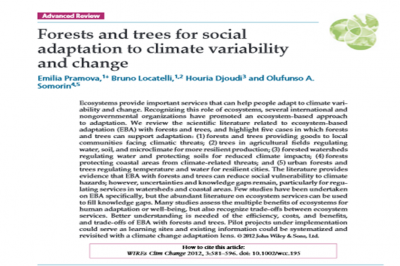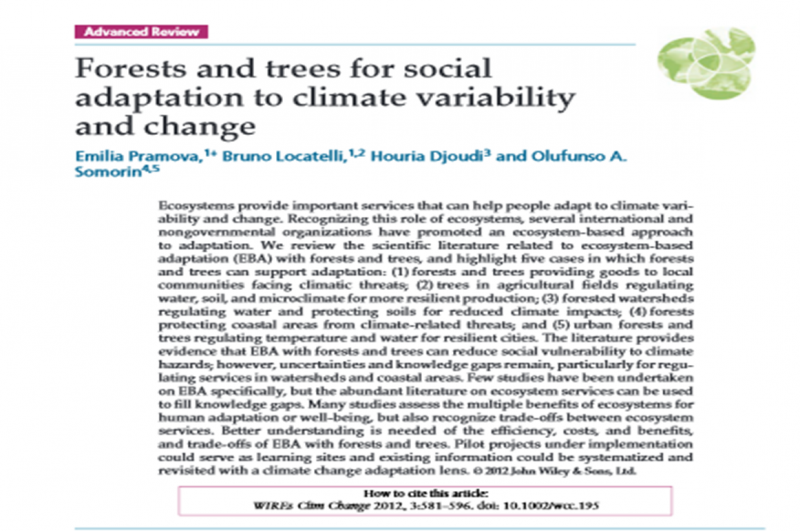Ecosystems provide crucial services to help people adapt to climate change. In conducting a review of the scientific literature, this paper shows how ecosystem-based approaches to adaptation can reduce social vulnerability to climate hazards, and highlights knowledge gaps and trade-offs that require more research.
The paper examines the impact of climate variation or change, the social vulnerability, and the ecosystem services of the following five different uses of forests and trees.
- Forests and trees providing goods for local communities – Besides providing timber, they can act as a safety net by providing charcoal, firewood, food and a source of income diversification. Exclusion from forest and mangrove resources has been shown to increase vulnerability, disproportionately affecting the poor.
- Use of trees in agriculture to regulate water, soil and microclimate – Agroforestry is known to increase soil porosity, reduce runoff and increase soil cover, while nitrogen-fixing trees increase agricultural drought-resilience.
- Regulating water and protecting soil with forested watersheds – Water infiltration, rainfall interception and groundwater recharge are all influenced by forests, contributing to the regulation of base and peak flows. They also stabilise soil and reduce erosion, though their ability to mitigate extreme events is still debated.
- Forests as coastal protection from climate-related threats – Mangroves can protect coastal areas from storms, floods and erosion through the absorption and dissipation of wave energy. This is evident in post-disaster studies, local knowledge and correlation models between mangrove cover and storm impacts; however, quantification remains difficult.
- Regulating water and temperature with urban forests and trees – Shade, evaporative cooling, and rainwater interception are a few of the benefits of urban forests and trees. It has been estimated that adding ten per cent of green cover to city centres could reduce surface temperature by up to 2.2 degrees Celsius.
The paper concludes by expressing the need for a greater understanding of the efficiency, costs and benefits, and trade-offs of ecosystem-based approaches with forests and trees. To aid in this, the abundant literature on ecosystem services should be revisited with a climate change related lens.









